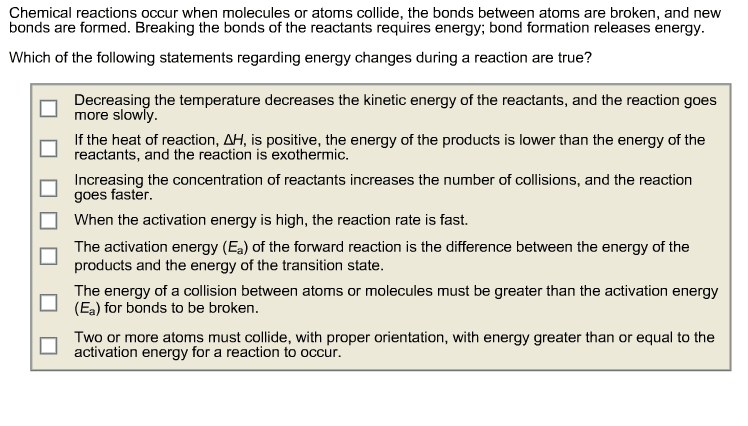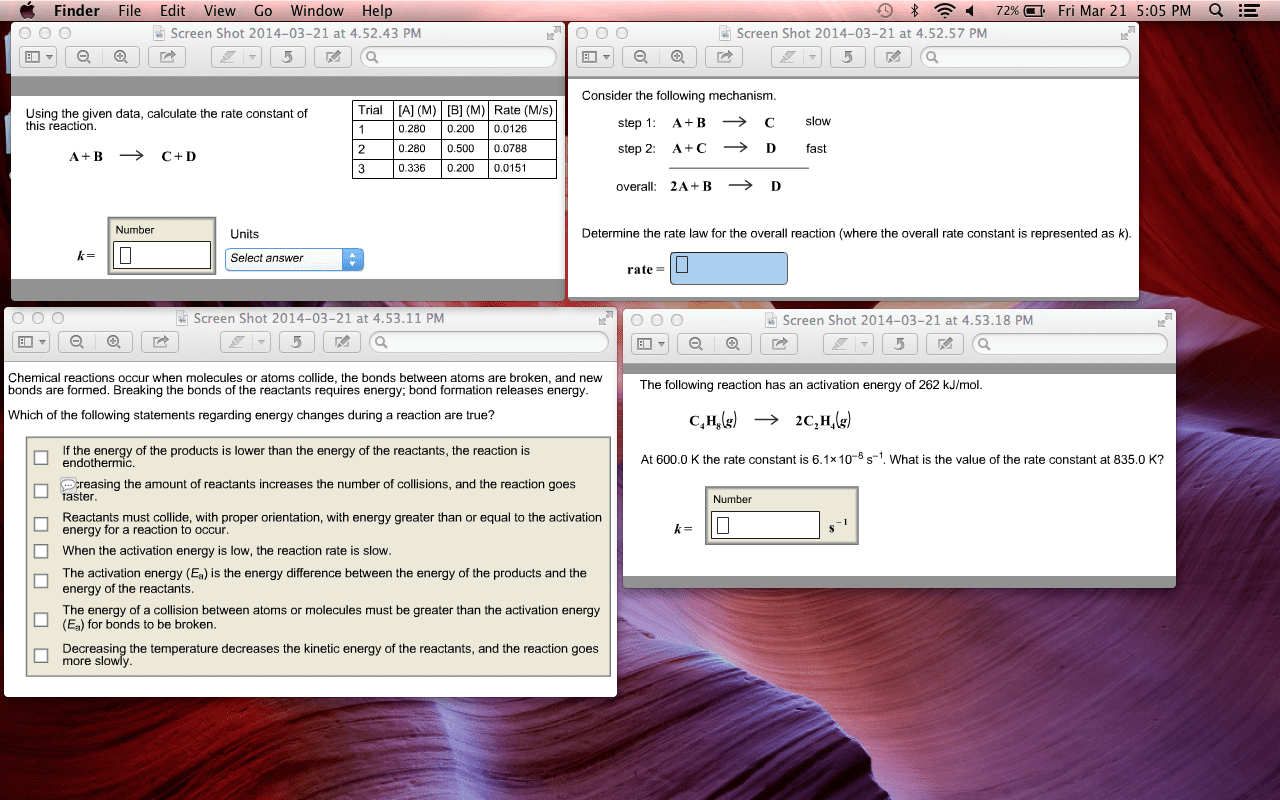CAS CH 102 Lecture Notes - Lecture 1: Ionic Compound, Reaction Rate, Activation Energy
Document Summary
Catalyst: foreign substance added to chemical reaction to increase rate of reaction by lowering activation energy needed. Addition = rate of reaction; increases frequency of collisions, faster: faster molecules, more collisions. Removal = rate of reaction; decreases frequency of collisions, slower: slower molecules, less collisions. Pressure = rate of reaction: high collision rate due to more compact. Pressure = rate of reaction: lower collision rate due to less compact. Nature of reactants: based on its properties & types of bonds. In solution, ionic compounds tend to react more quickly than covalent compounds because fewer bonds need to be rearranged. Reduction in the solubility of an ionic precipitate when a soluble compound combining one of the ions of the precipitate is added to the solution in equilibrium with the precipitate. Equilibrium shifts to the side with the fewer amounts, causing the reverse reaction to be faster than the forward, and vice versa: * look at le chatlier"s principle below.




